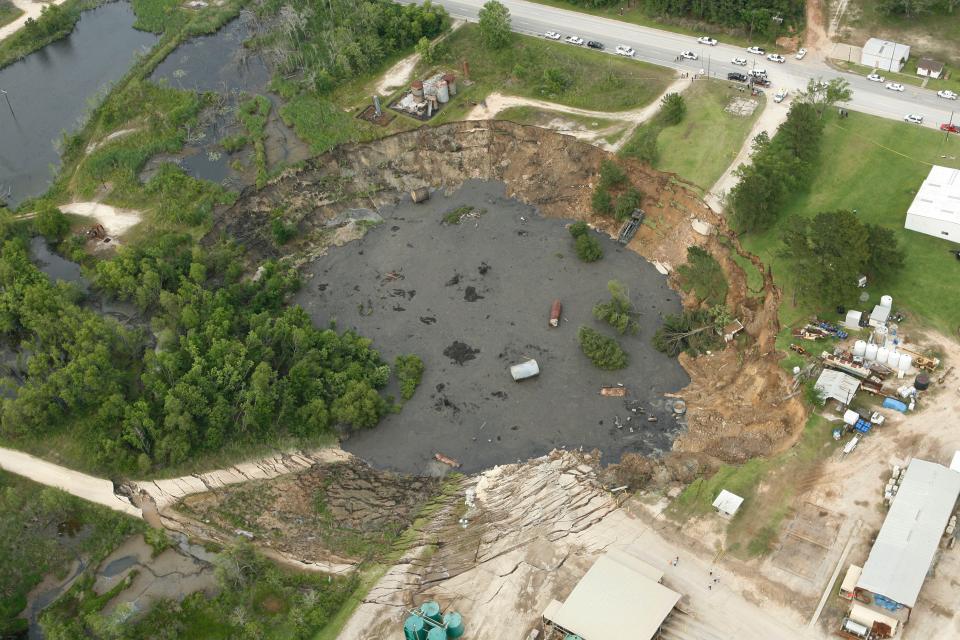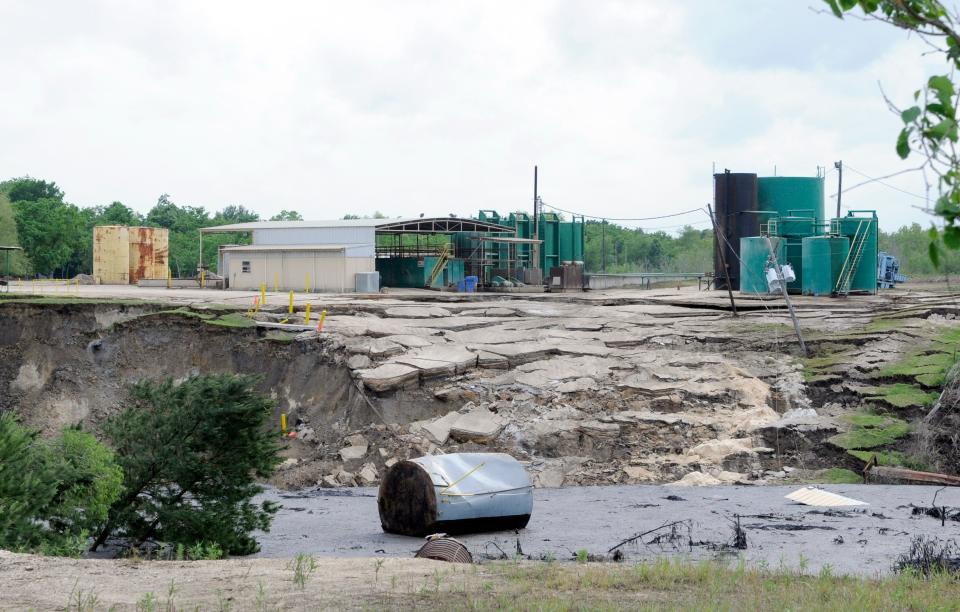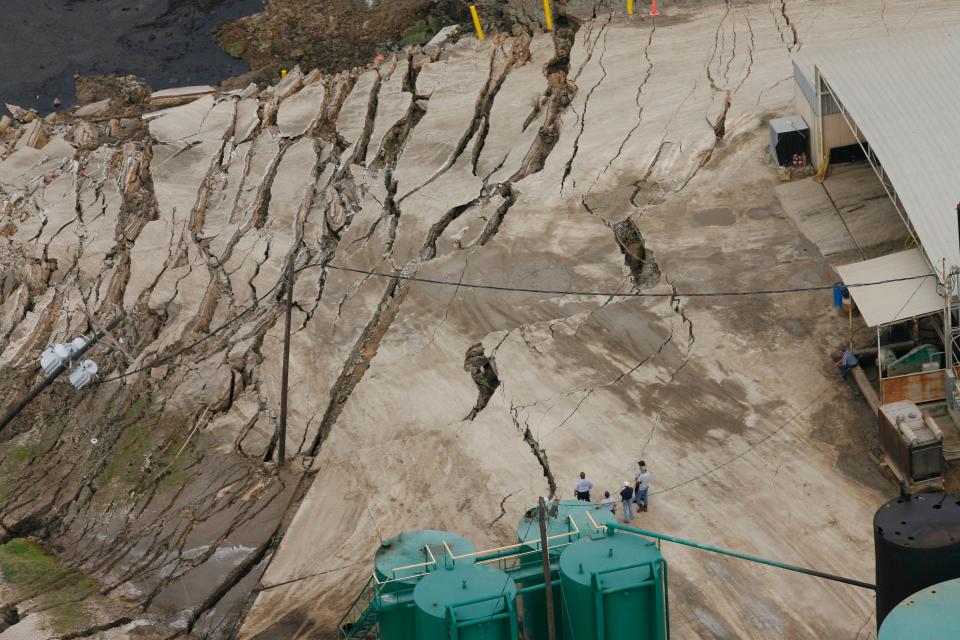Massive sinkhole expands in East Texas town, threatening to swallow residents, buildings
In the small town of Daisetta, Texas, residents this week learned that a massive sinkhole they thought had been stable for more than a decade was expanding.
Officials in the town said Sunday they were "made aware" that the sinkhole "has expanded."
Video shows a nearby building and industrial tanks have been collapsing into the sinkhole this week, KTRK-TV reported. Footage shows cracks forming in the ground along the edges of an enormous hole in the ground, filled with dark water and other debris.
Liberty County Assistant Fire Marshal Nat Holcomb estimated the sinkhole has grown wider by 150 feet and gained 150 feet in depth, according to KTRK-TV. When the sinkhole first opened in 2008, the crater grew to 900 feet across and 260 feet deep.
As of Thursday morning, the town had not ordered any evacuations, the mayor's office confirmed with USA TODAY.
Daisetta has a population of less then 1,000.

Sinkhole about 500 yards from local high school
The sinkhole is in "fairly close proximity," located across a major road about 500 yards from Hull-Daisetta High School, district superintendent Tim Bartram told USA TODAY.
But it has been expanding in the opposite direction, he said.
"The high school is not in any imminent danger," Bartram said, but added that school officials are continuing to monitor the situation.

Emergency management is on site, he said, and they've marked a perimeter and a "hot zone" they watch "to see what's happening daily, hourly."
Daisetta is located between Houston and Beaumont, Texas, in a part of the state known for oil drilling and fracking.
"That's probably contributed a little bit to the sinkholes," Bartram said. "The injection of salt water and things like that that they used to do."

What is a sinkhole?
Sinkholes occur in areas where the ground is made up of limestone or salt beds – rocks that allow water to flow under the surface.
Rocks in the ground underneath sinkholes are soluble, according to the U.S. Geological Survey, and when they dissolve, caverns form underground.
Eventually, the land above the underground space caves in, the USGS says.
"Sinkholes are dramatic because the land usually stays intact for a period of time until the underground spaces just get too big. If there is not enough support for the land above the spaces, then a sudden collapse of the land surface can occur," the USGS says on its website.
Since the sinkhole first opened in 2008, alligators have inhabited the waters and some Daisetta residents fish in the sinkhole's pond-like surface, Bartram said.
This article originally appeared on USA TODAY: Daisetta Texas sinkhole expands after more than a decade

